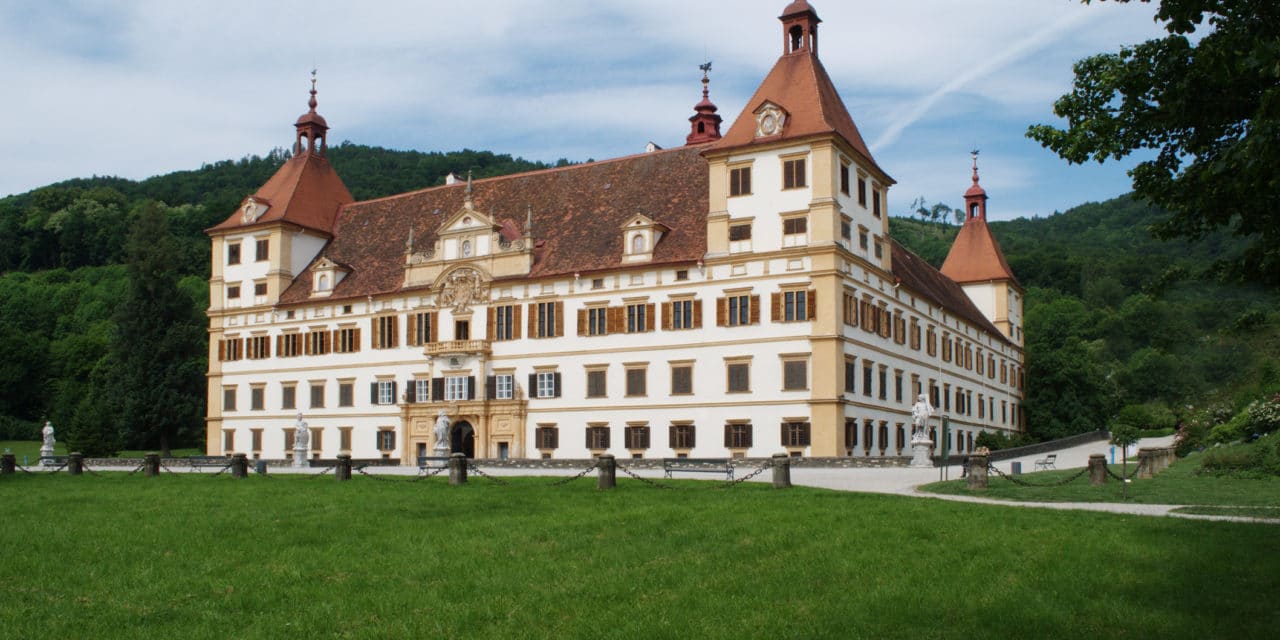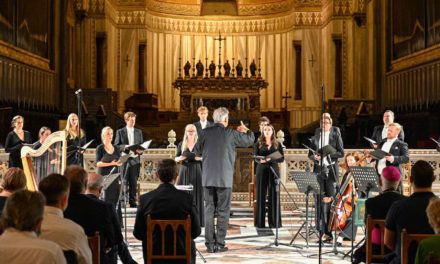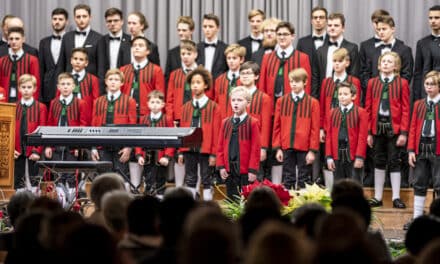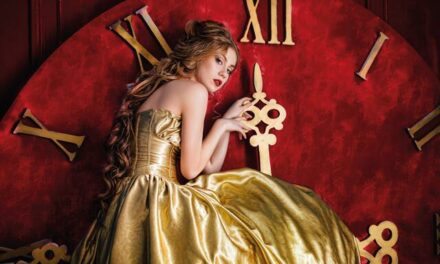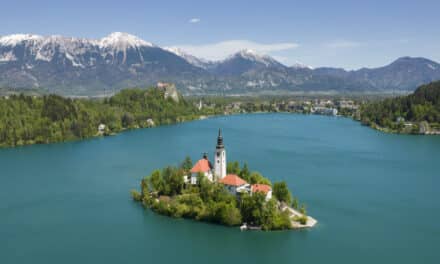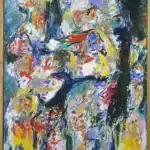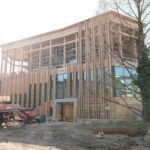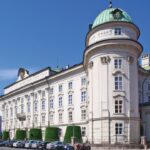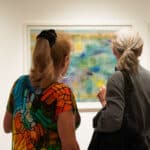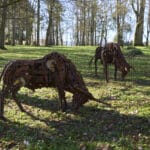Eggenberg Palace is a first-class Baroque masterpiece, a UNESCO World Heritage Site and a place where national history and world history meet.
Architecture and furnishings combine here to create a symbolic representation of the universe, which was built to represent the princely Eggenberg family. The palace preserves a precious ensemble of historical interiors with an important cycle of over 500 ceiling paintings, at once a panorama of universal history and a mirror of virtue in the Baroque spirit. It is an almost unadulterated work of spatial art, in which the furnishing phases of the 17th and 18th centuries combine to form an ensemble of special experiential value.
Today, the castle is surrounded by an extensive Romantic landscape park, which is one of the most important gardens in the country with its precious trees. It serves as a refuge of peace and relaxation as well as a valuable nature conservation and recreation area within the city.
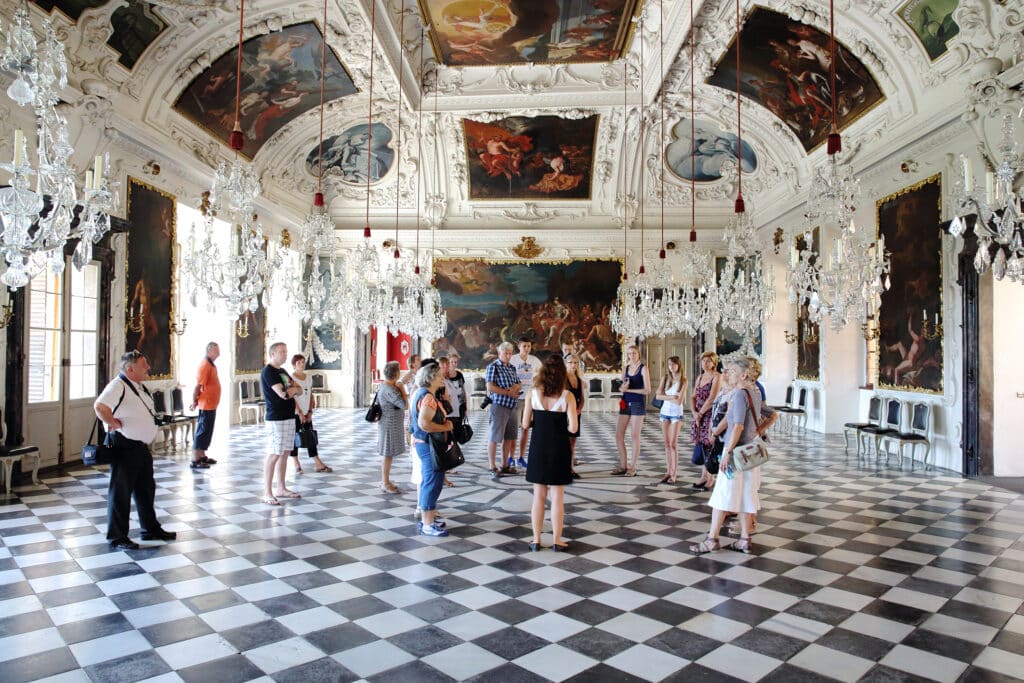
Eggenberg Palace, Planetary Hall, Photo: Universalmuseum Joanneum/J.J. Kucek
The Beletage of Eggenberg Palace has retained its original appearance almost unchanged to this day. The cycle of 24 state rooms with original 17th and 18th century furnishings is one of the most important ensembles of historic interiors in Austria. Rarely has a room interior of comparable artistic quality been preserved so completely and so undisturbed. The cycle of 24 state rooms with original 17th and 18th century furnishings is one of the most important ensembles of historic interiors in Austria. Rarely has a room interior of comparable artistic quality been preserved so completely and so undisturbed. The highlight of the state rooms is the Planetary Hall, completed in 1685, which owes its name to the cycle of paintings by the court painter Hans Adam Weissenkircher. With its multi-layered pictorial program, which fuses astrological and hermetic ideas, numerical symbolism and family mythology into a complex allegory for the glory of the Eggenberg family, it is one of the most impressive works of interior art of the early Baroque period in Central Europe.
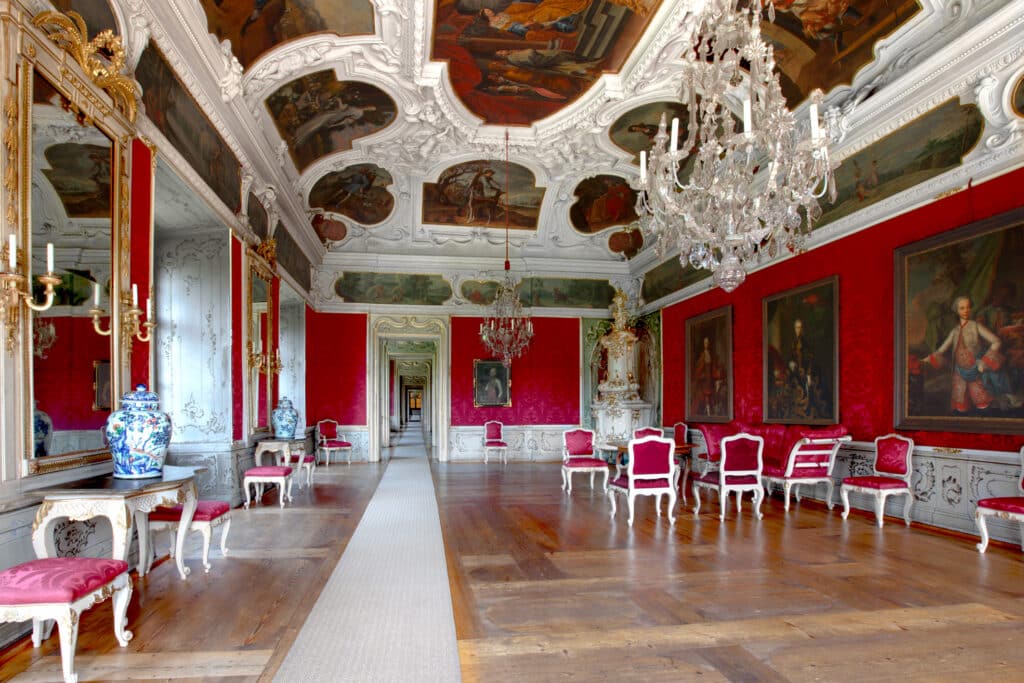
Enfilade, Photo: Universalmuseum Joanneum/ Photo Peter Gradischnigg
Experience 500 years of European history in the mirror of art and cultural history: outstanding examples of Austrian Gothic art bear witness to the faith of the Middle Ages in seven exhibition rooms, while masterpieces from the Renaissance and Baroque periods tell of the splendor and misery of the early modern period in 15 newly designed themed rooms. A constantly changing selection of precious hand drawings and prints from the Kupferstichkabinett enriches the permanent exhibition with complementary themes.
The Coin Cabinet in Schloss Eggenberg tells memorable coin stories from Styria - from the Panther taler from the Graz mint to the fuzzy head types of the Celts, from the gold coin from Flavia Solva, which was reworked into a piece of jewelry, to the Renaissance medal gem of Archduke Charles II of Inner Austria.
The Archaeology Museum displays more than 1,200 objects which, as "traces of life", form the starting points for questions that have moved people for thousands of years. Highlights of the permanent exhibition include world-class objects from the Hallstatt period, such as the cult chariot from Strettweg or the mask from Kleinklein, as well as the most valuable Roman find from Styria, the silver cup from Grünau.
The castle is open all year round
www.museum-joanneum.at

